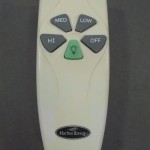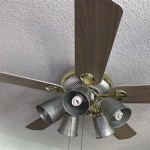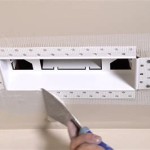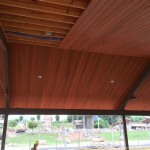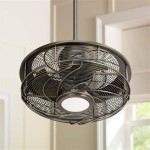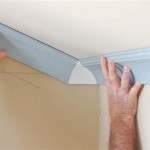What is a Sound Barrier Ceiling System?
A sound barrier ceiling system is a specialized type of ceiling designed to significantly reduce noise transmission between spaces. Unlike standard ceilings that primarily address aesthetic concerns or offer basic insulation, sound barrier ceilings are engineered with materials and construction techniques focused on impeding the passage of sound waves. These systems are often employed in settings where noise control is paramount, such as offices, apartments, classrooms, recording studios, and healthcare facilities.
The effectiveness of a sound barrier ceiling hinges on its ability to block sound waves from traveling through the ceiling structure. This is achieved through a combination of factors, including the materials used, the ceiling's construction method, and the presence of air gaps or damping mechanisms. A well-designed sound barrier ceiling system can dramatically reduce noise levels in adjacent rooms or spaces, enhancing privacy and improving overall acoustic comfort.
The concept of soundproofing through ceiling systems relies heavily on understanding the principles of sound transmission. Sound travels as waves, and when these waves encounter a barrier, they can be reflected, absorbed, or transmitted. A sound barrier ceiling aims to maximize reflection and absorption while minimizing transmission. This is accomplished by incorporating dense, sound-absorbing materials and decoupling the ceiling structure from the building's structural framework.
The performance of a sound barrier ceiling is typically measured using metrics such as the Sound Transmission Class (STC) and the Ceiling Attenuation Class (CAC). STC measures the ceiling's ability to block airborne sound transmission, while CAC measures its ability to block sound transmission through the ceiling into adjacent spaces. Higher STC and CAC ratings indicate better soundproofing performance. Careful consideration of these ratings is essential when selecting a sound barrier ceiling system for a specific application.
Key Components of a Sound Barrier Ceiling System
A comprehensive sound barrier ceiling system typically comprises several key components working in concert to achieve optimal noise reduction. These components include the ceiling tiles or panels themselves, the suspension grid system, and any additional sound-dampening or absorption materials incorporated into the assembly. Each component plays a crucial role in the overall effectiveness of the system.
The ceiling tiles or panels often form the primary sound barrier. These are usually made from dense materials such as mineral fiber, fiberglass, gypsum, or specialized composites. These materials are chosen for their inherent sound-absorbing and sound-blocking properties. The density of the material helps to impede sound wave transmission, while the surface texture can contribute to sound absorption, reducing reverberation and echo within the space.
The suspension grid system provides structural support for the ceiling tiles and can also contribute to sound isolation. The grid is typically made from metal and is designed to create a suspended ceiling that is decoupled from the building's structural framework. This decoupling minimizes the transmission of vibrations through the structure, further reducing noise transmission. Specialized clips and hangers are often used to enhance this decoupling effect.
Additional sound-dampening or absorption materials may be incorporated into the ceiling assembly to further enhance its performance. These materials can include fiberglass insulation, mass-loaded vinyl, or sound-dampening compounds applied to the back of the ceiling tiles or panels. These materials add mass and absorb sound energy, further reducing noise transmission and improving the overall acoustic performance of the ceiling.
Integration with other building systems is also a crucial component. Properly sealing penetrations such as light fixtures, HVAC vents, and sprinkler heads is critical to maintaining the integrity of the sound barrier. Gaps or openings can act as sound leaks, diminishing the overall effectiveness of the system. Careful attention to detail during installation is essential to ensure that all penetrations are properly sealed.
Installation Considerations for Sound Barrier Ceilings
The installation of a sound barrier ceiling system requires careful planning and execution to ensure optimal performance. Improper installation can significantly reduce the effectiveness of the system, negating its intended benefits. Therefore, it is essential to follow manufacturer's instructions meticulously and to employ experienced installers familiar with soundproofing techniques.
Preparation of the existing space is the first critical step. All existing ceiling materials and debris should be removed to provide a clean and level surface for the new ceiling system. Any structural issues should be addressed before proceeding with the installation. Proper preparation ensures that the new ceiling system will be installed correctly and will function as intended.
The suspension grid system must be installed accurately and securely. The grid should be level and properly supported to prevent sagging or movement. Specialized clips and hangers may be used to decouple the grid from the building's structure, minimizing vibration transmission. Attention to detail during the grid installation is crucial for the overall performance of the sound barrier ceiling.
The ceiling tiles or panels must be carefully installed to ensure a tight fit and proper alignment. Gaps between tiles can compromise the sound barrier, allowing noise to leak through. The tiles should be handled with care to avoid damage, which can also reduce their effectiveness. Proper installation of the tiles is essential for maintaining the integrity of the sound barrier.
Sealing penetrations is a critical step in the installation process. All openings for light fixtures, HVAC vents, and sprinkler heads should be properly sealed with acoustical sealant to prevent sound leaks. Special attention should be paid to areas where the ceiling meets walls or other structural elements. Proper sealing ensures that the sound barrier is continuous and effective.
Applications and Benefits of Sound Barrier Ceilings
Sound barrier ceilings find application in a wide range of environments where noise control is a priority. From commercial offices and residential apartments to educational institutions and healthcare facilities, these systems offer numerous benefits in terms of acoustic comfort and privacy. By reducing noise transmission, sound barrier ceilings contribute to a more productive, comfortable, and healthy indoor environment.
In commercial offices, sound barrier ceilings can create a more focused and productive workspace. By reducing noise distractions, employees can concentrate more effectively on their tasks. These ceilings can also enhance privacy for confidential conversations and meetings. A quieter office environment can lead to improved employee morale and reduced stress levels.
In residential apartments, sound barrier ceilings can improve the quality of life for residents by reducing noise transmission between units. This can minimize disturbances from neighbors, creating a more peaceful and private living environment. Sound barrier ceilings can also help to reduce noise from outside sources, such as traffic or construction. A quieter apartment can improve sleep quality and overall well-being.
In educational institutions, sound barrier ceilings can create a more conducive learning environment. By reducing noise distractions, students can focus more effectively on their studies. These ceilings can also improve speech intelligibility in classrooms, making it easier for students to hear and understand their teachers. A quieter classroom can lead to improved academic performance.
In healthcare facilities, sound barrier ceilings can create a more healing and restful environment for patients. By reducing noise levels, patients can rest and recover more effectively. These ceilings can also enhance privacy for patient consultations and examinations. A quieter healthcare environment can reduce patient stress and improve overall satisfaction.
Beyond these specific applications, sound barrier ceilings can also be used in recording studios, home theaters, and other environments where acoustic control is essential. The benefits of these systems include improved sound quality, enhanced privacy, and a more comfortable and productive indoor environment. By carefully selecting and installing a sound barrier ceiling system, it is possible to significantly reduce noise transmission and create a more acoustically pleasing space.

Maxi 60 System Dependable Fire Rated Soundproofing Solution

Breaking The Sound Barrier Why Acoustic Ceiling Panels Are Trending Everywhere Vrikshat

Ceiling System 2 Timber Joist Soundproof Kit Noise Stop Systems

Sound Insulation Works With Soundproofing Walls Soundtreating

How To Soundproof A Loft

562572 Vp1 100ceiling En Us

Acousticlip Timber Joist Ceiling System Soundproof Kit

Sound Insulation For Ceilings Mute System 63 Decibel

Hd1051 Hush Panel 28 With High Mass Ceiling System

High Sound Absorption Blocking In Office Ceilings Megasorber
Related Posts

